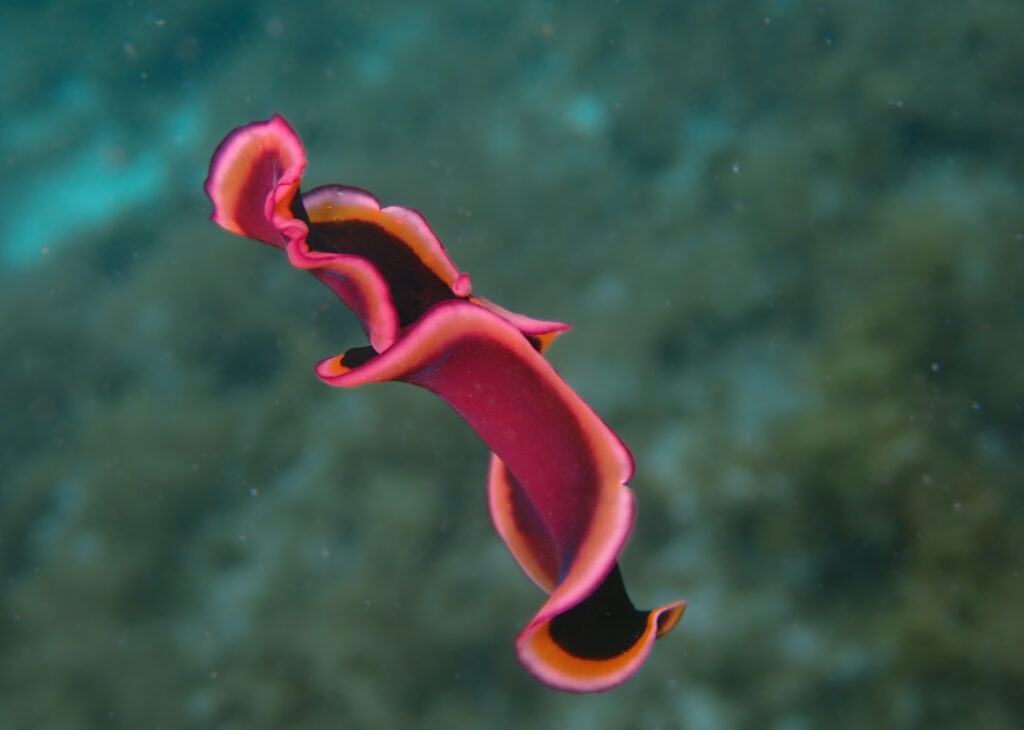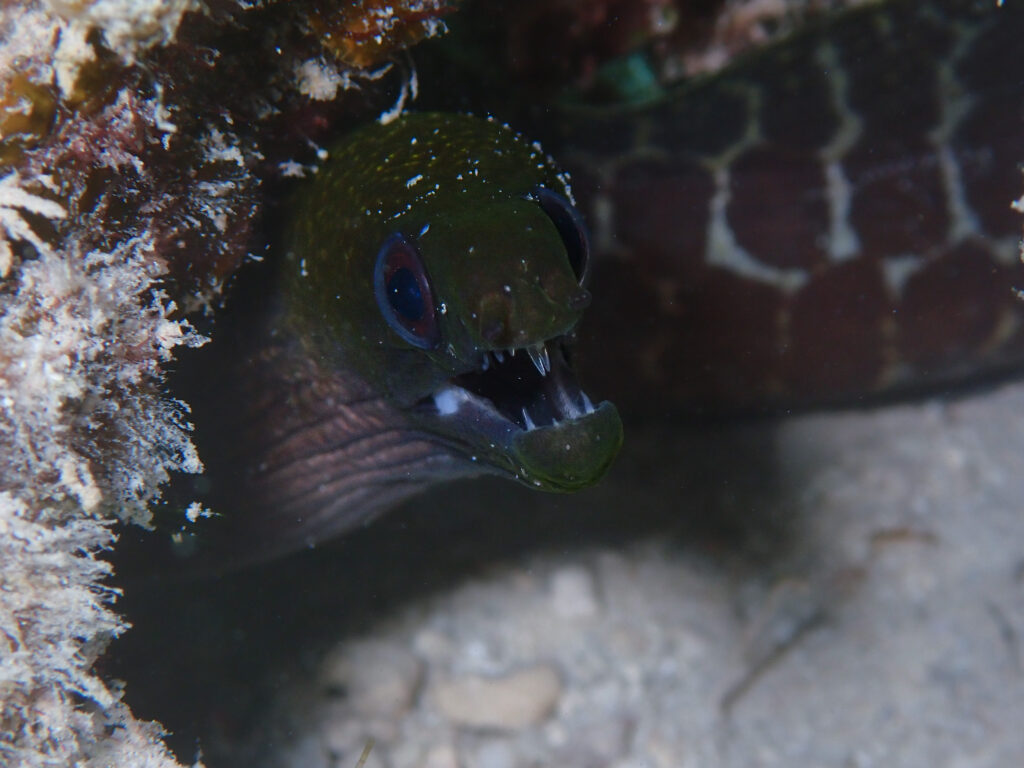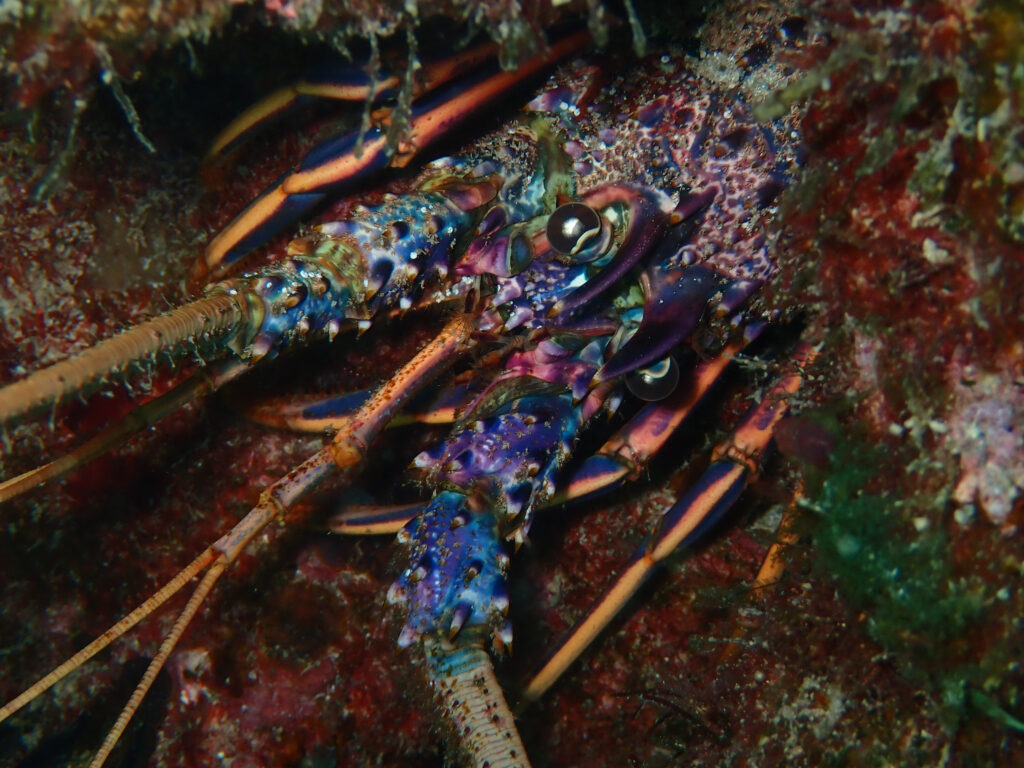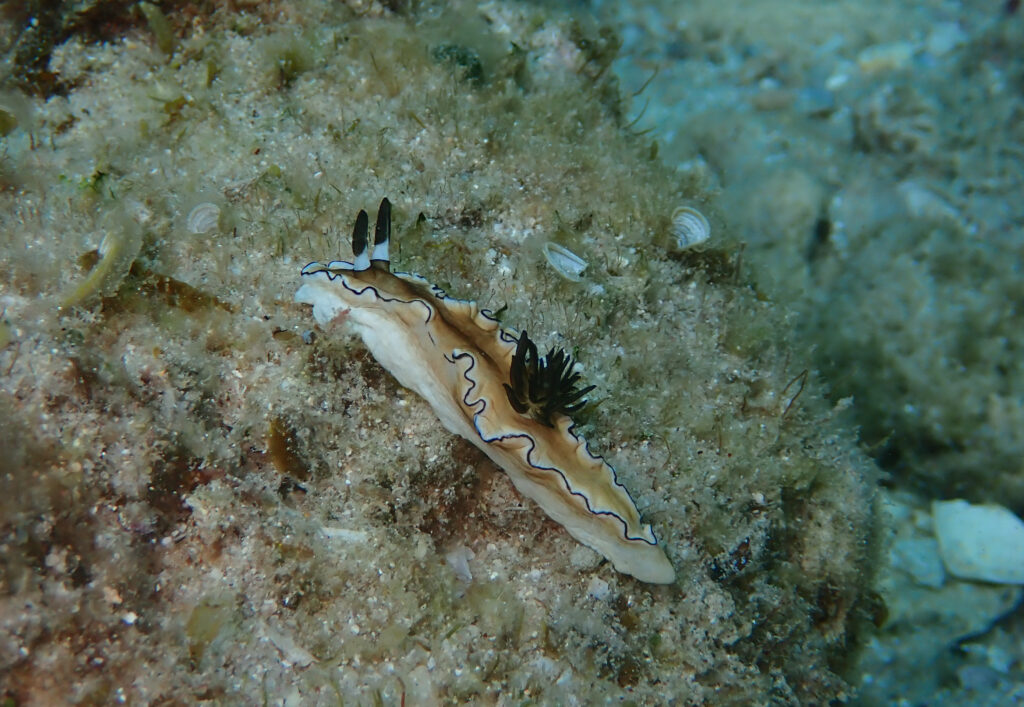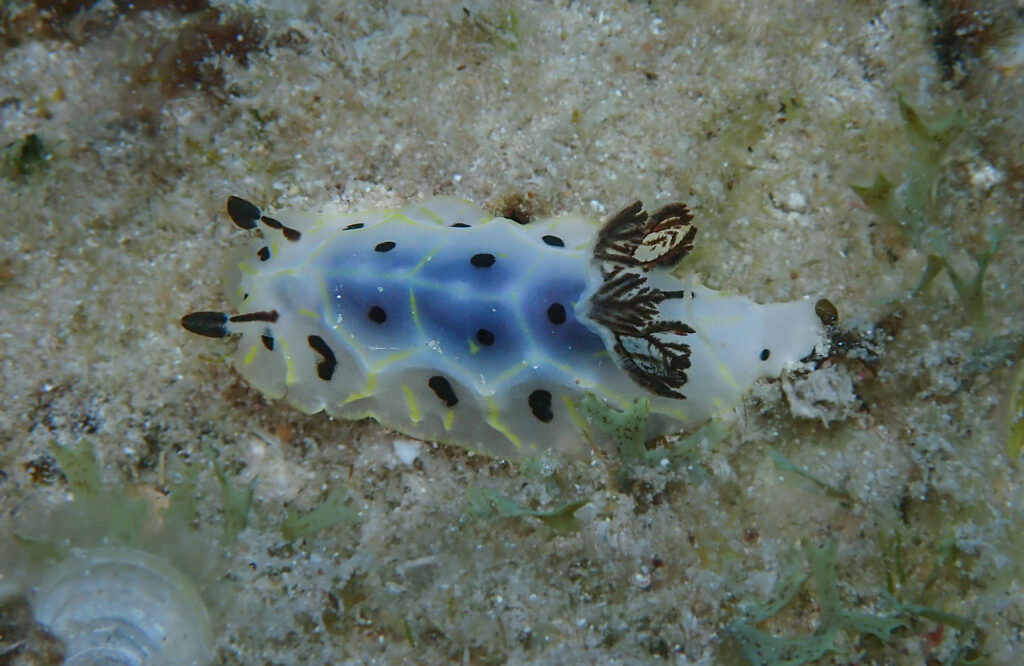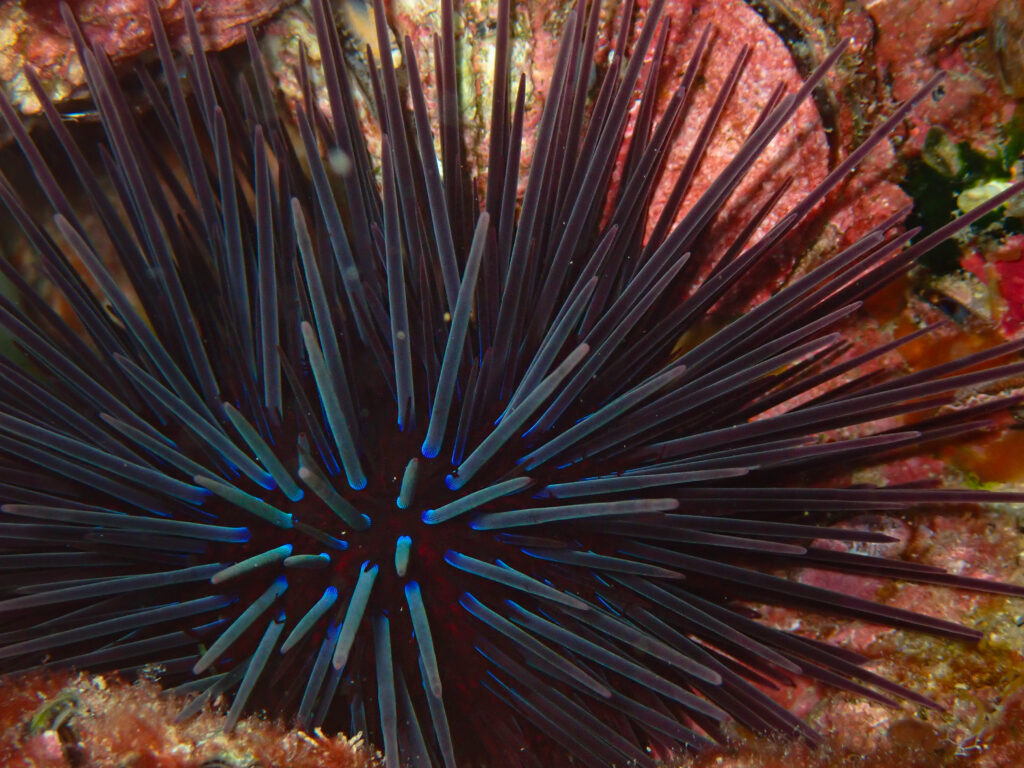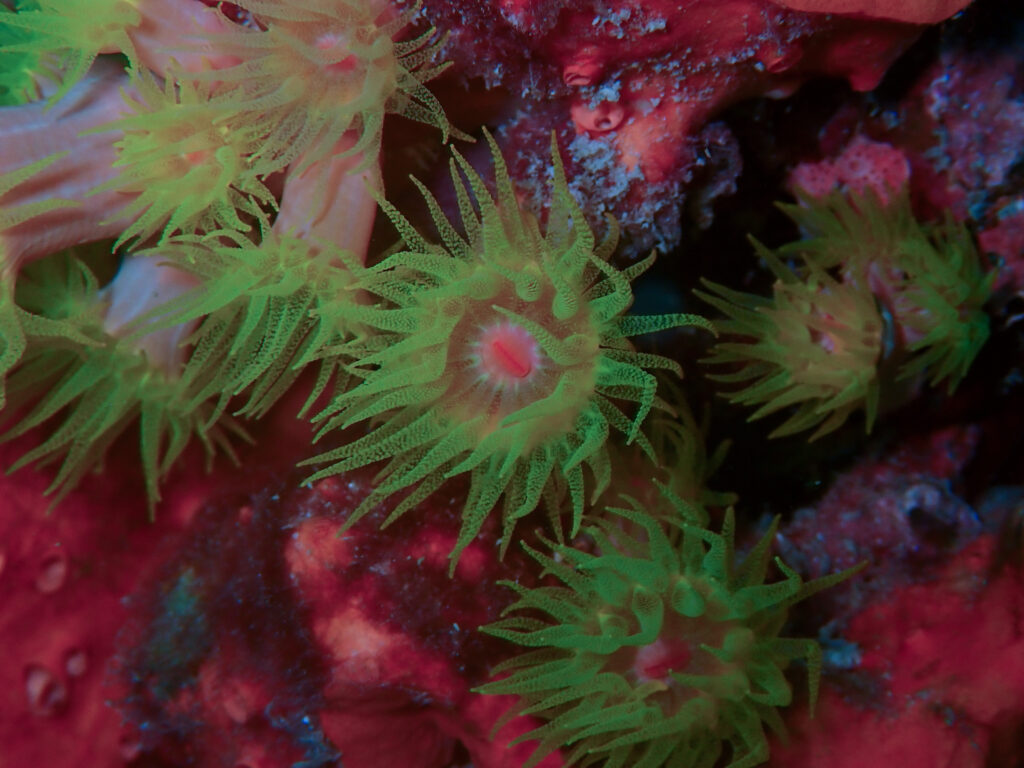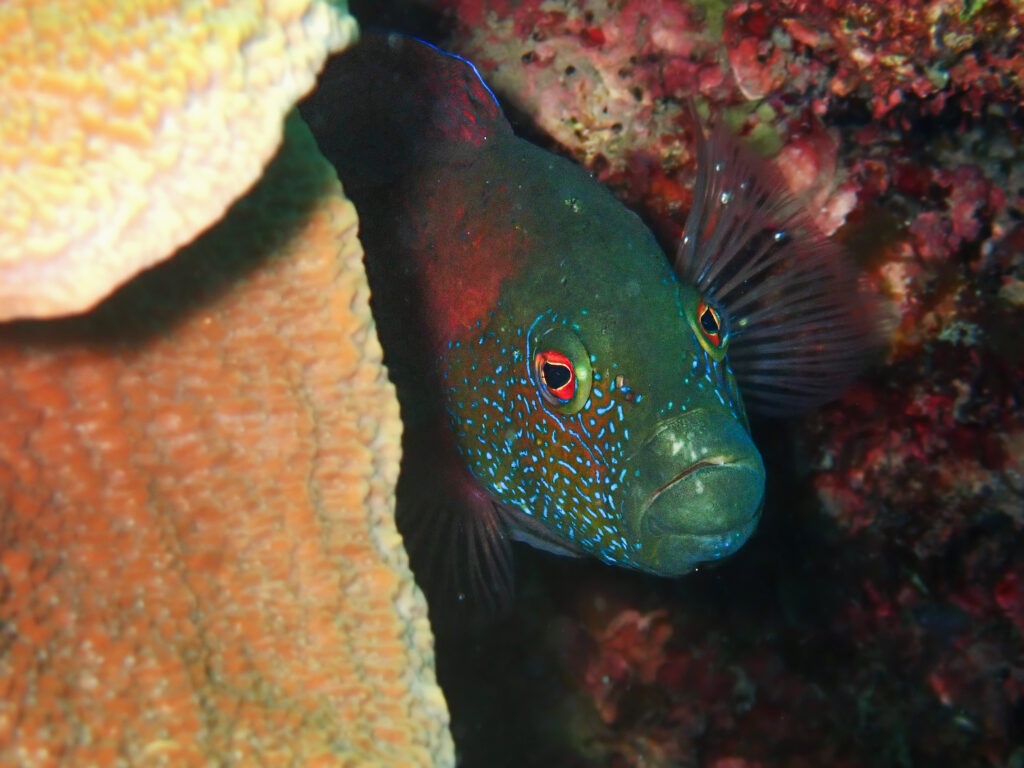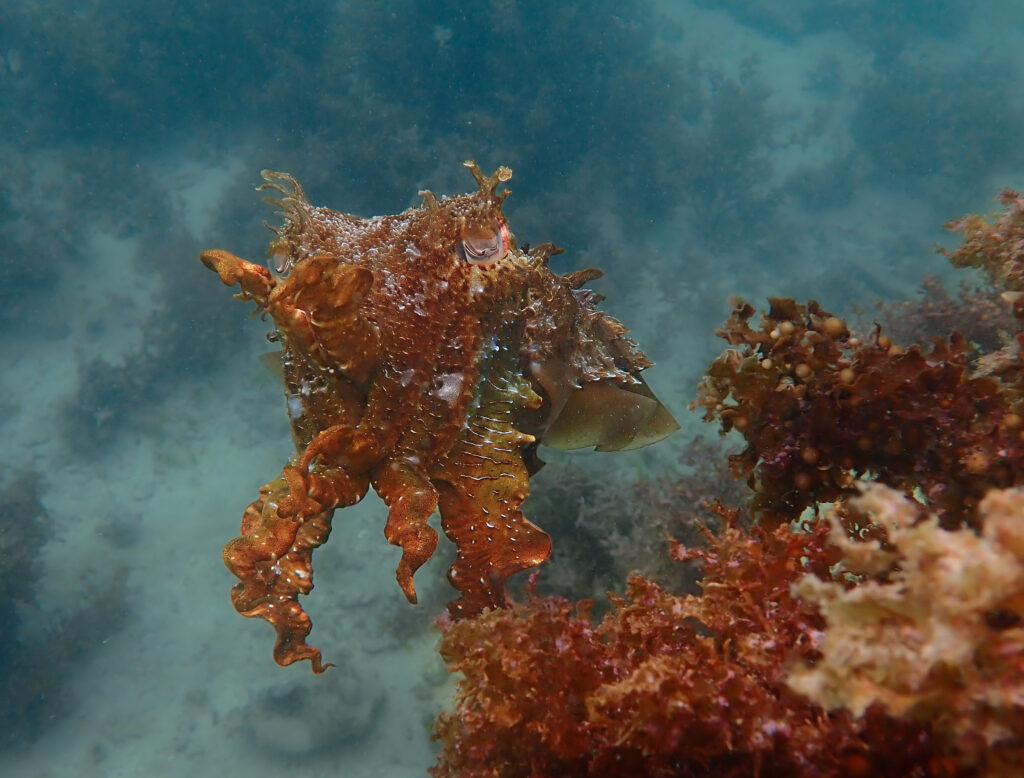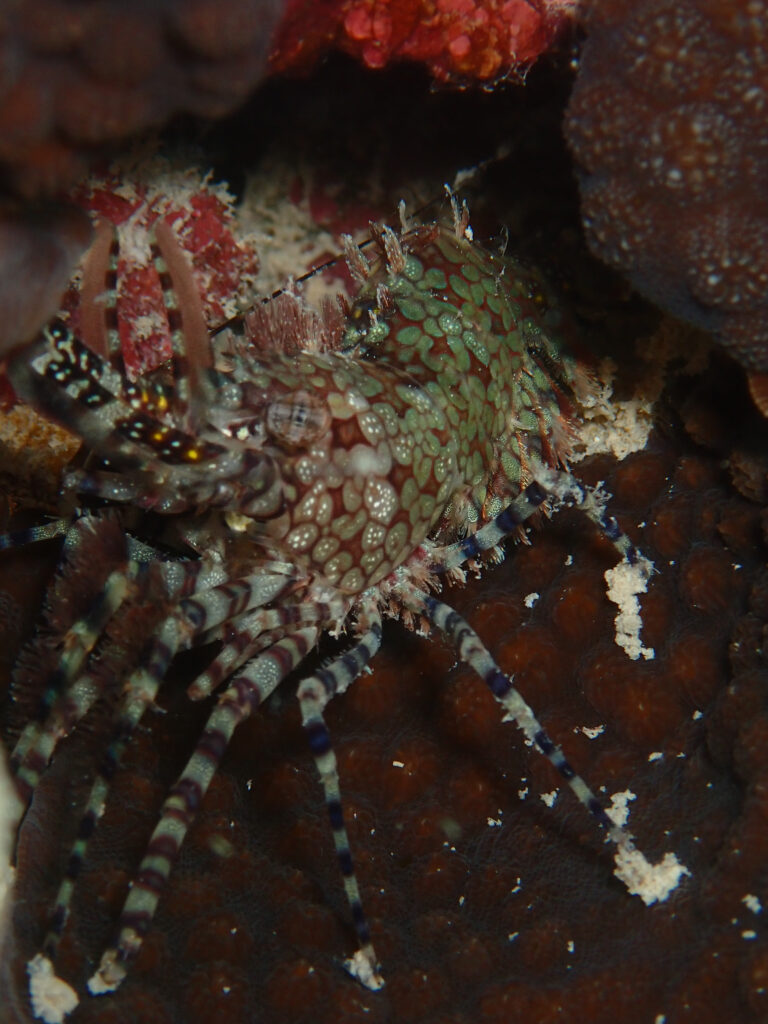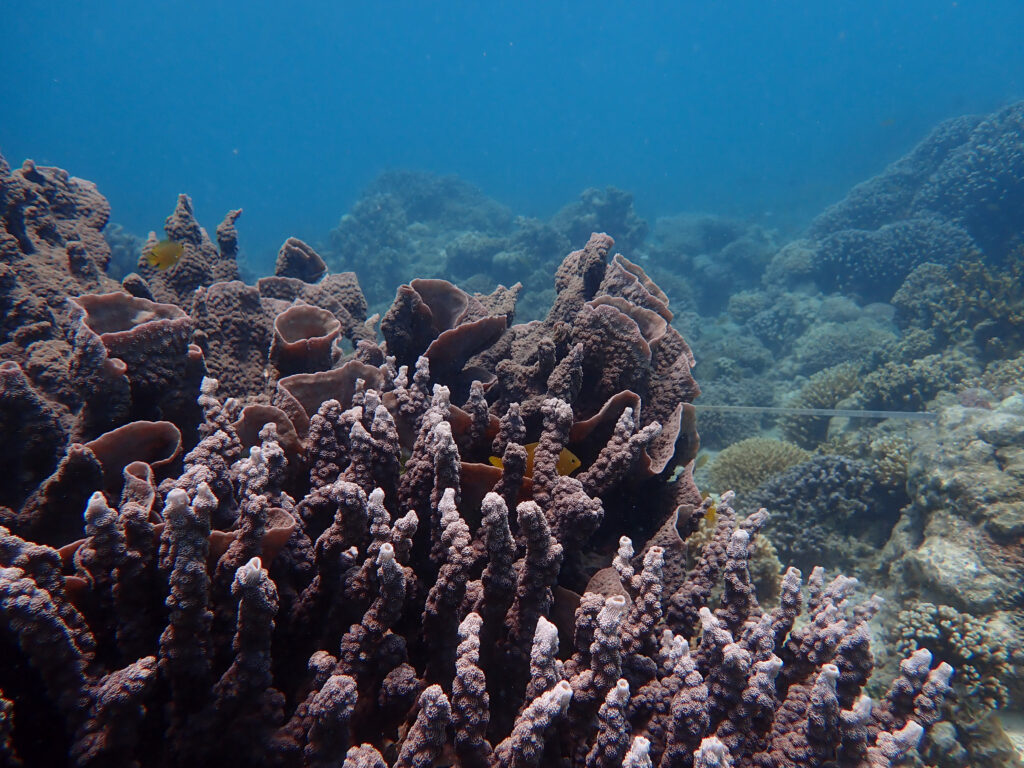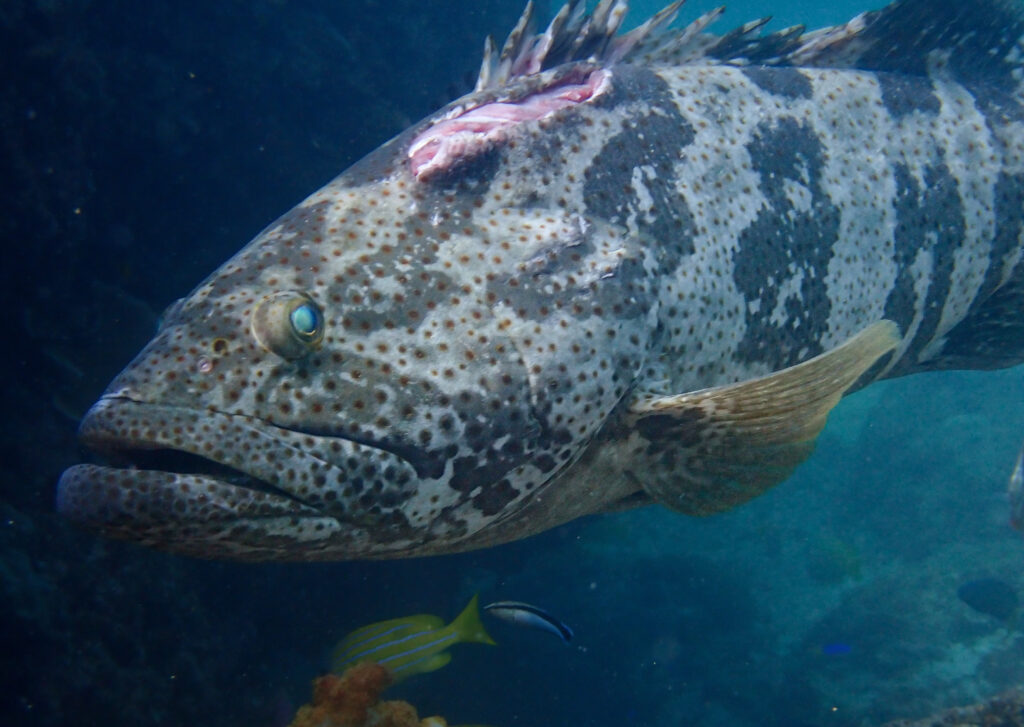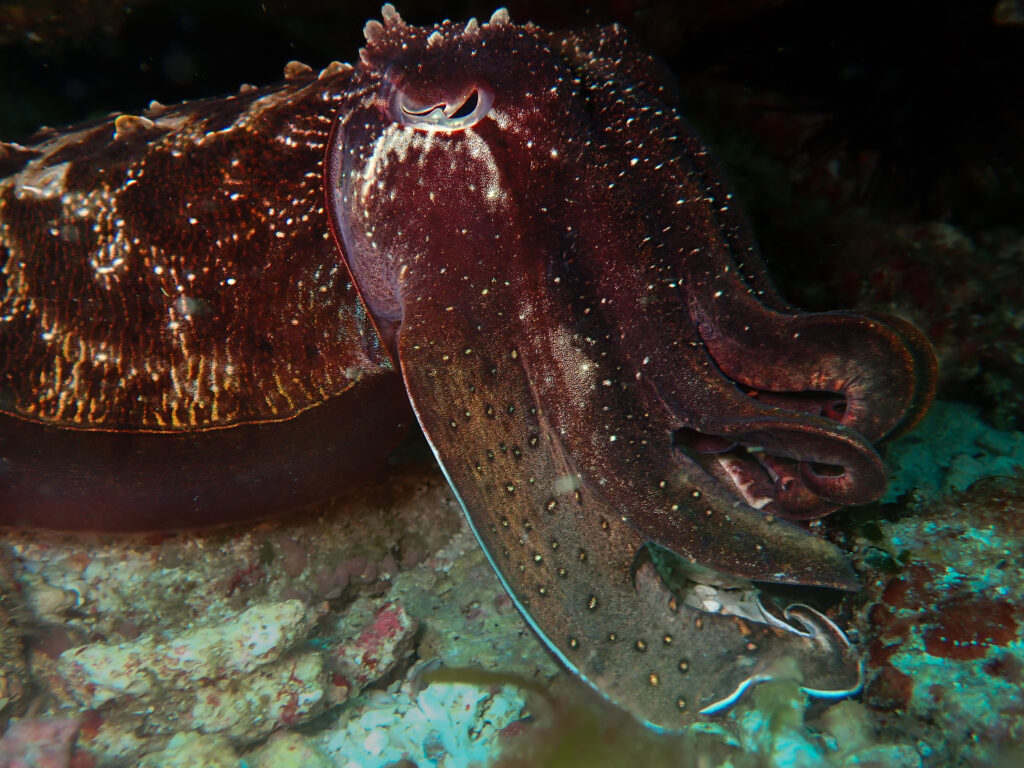Melita arrived in the Exmouth marina towards the end of October, 2023. This was only our second marina visit since the beginning of the trip. It was a nice treat to be able to go for a wander and an even nicer treat to be able to restock and refuel with ease. We waited here for our next crew, whilst escaping some of the rather gnarly winds. Victorian RLS Trainer Tess Hoinville and Tasmanian RLSer Sue Baker joined us for this leg of the journey, as we transitioned from tropical to temperate surveys along the Western Australian coast. This was a two and half week trip, with a planned sailing distance of 750nm. We were set to explore some of Ningaloo Reef, as well as the coastline and islands between Exmouth and Perth. It was incredibly windy for a couple of days, so we found ourselves waiting for a good weather window. This allowed time for some fish and invertebrate study prior to kicking off our next round of surveys.
Ningaloo Marine Park
Our first stop was at Tantabiddi. We tied onto a mooring in a relatively calm bay where we could tender to and from our sites. Here we surveyed some existing RLS sites located within the Tantabiddi Sanctuary Zone, and also established new sites outside of it. Along the way, two pods of dolphins came to check us out, so we were starting off our surveys in high spirits. Each site we surveyed had amazing coral cover with big colonies of branching and foliose corals, as well as enormous boulder corals. There were schools of of blue-green pullers (Chromis viridis) darting about in unison and sparkling in the sunlight, cute humbug damsels (Dascyllus aruanus) shying away from our bubbles and swimming into their coral homes, and some big, feisty honey-head damselfish (Dischistodus prosopotaenia) protecting their algae patches. All of the typical tropical species were around, with abundant wrasse, parrotfish, butterfly fish and angel fish making the dive very beautiful. One particularly groovy critter I spotted was a marbled shrimp (Saron marmoratus). It was out walking on the coral, looking incredible as though dressed in 70s attire. It let me take a few photos before retreating back into its coral home.
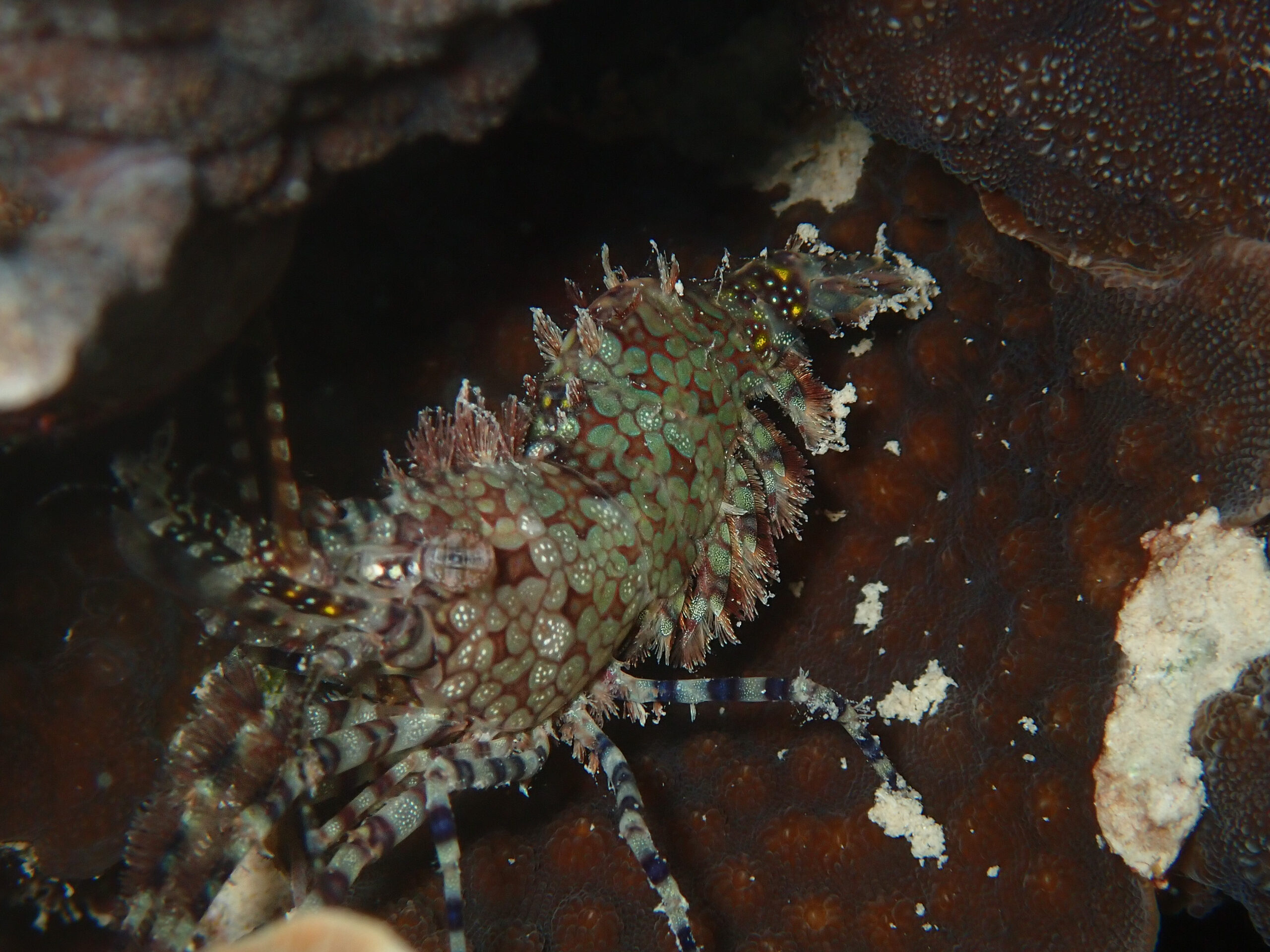
Bernier Island
We sailed onwards toward Bernier Island, located in the Shark Bay World Heritage Area. It was an uncomfortable sail but we anchored on the leeward side of the island to shelter from the wind and get a good night's rest. Tess and I dived two sites at Bernier Island, noting differences in coral cover and diversity between the two. These dives marked the beginning of a shift from tropical to temperate species as we travelled further south. Here we saw stripeys (Microcanthus strigatus) and old wives (Enoplosus armatus); species I hadn’t seen for a long while, since leaving my old home in Perth to live and work on the Great Barrier Reef. Not only were we seeing more temperate fish, but the coral-dominant reefs were soon replaced by kelp. It was also getting much cooler in the water now (for the tropical RLSers among the group!), dropping to about 20-23 degrees Celsius. This meant struggling to get into my 5mm wetsuit (yes – I know – I am a sook).
The first dive here was at an RLS site called Bernier Island Rocks, which is comprised of two massive rocks rising from the sea. This was such a good dive! The underwater structure was rugged and complex, with gulches and swim-throughs and walls; perfect for cryptic fish and invertebrates as well as schooling fish. It was a rocky reef with moderate coral cover and both temperate and tropical fish were abundant. There were schools of bigger fish at this site; 150 or so five-lined snapper (Lutjanus quinquelineatus), 100 grey drummers (Kyphosus bigibbus), 90 gold-spotted sweet lips (Plectorhinchus flavomaculatus), and golden trevally (Gnathanodon speciosus). A big cod with a bite mark approached me to show me its wounds, which can be seen in the gallery below.
Our next dive at Bernier was very different than the first, looking more like an apocalyptic wasteland or a moonscape area, with big rocky structures looming out of the sand and gloom. There was very limited coral and kelp cover, and a fine layer of sediment-laden turf algae growing on most of it. Biodiversity was quite limited, but there were A LOT of beautifully coloured crayfish (Panulirus cygnus) hiding out among the rocks. Nudibranchs, as well as some small triple-fins and gobies were seen on and off the transects, which was a nice treat during Method 2 surveys.
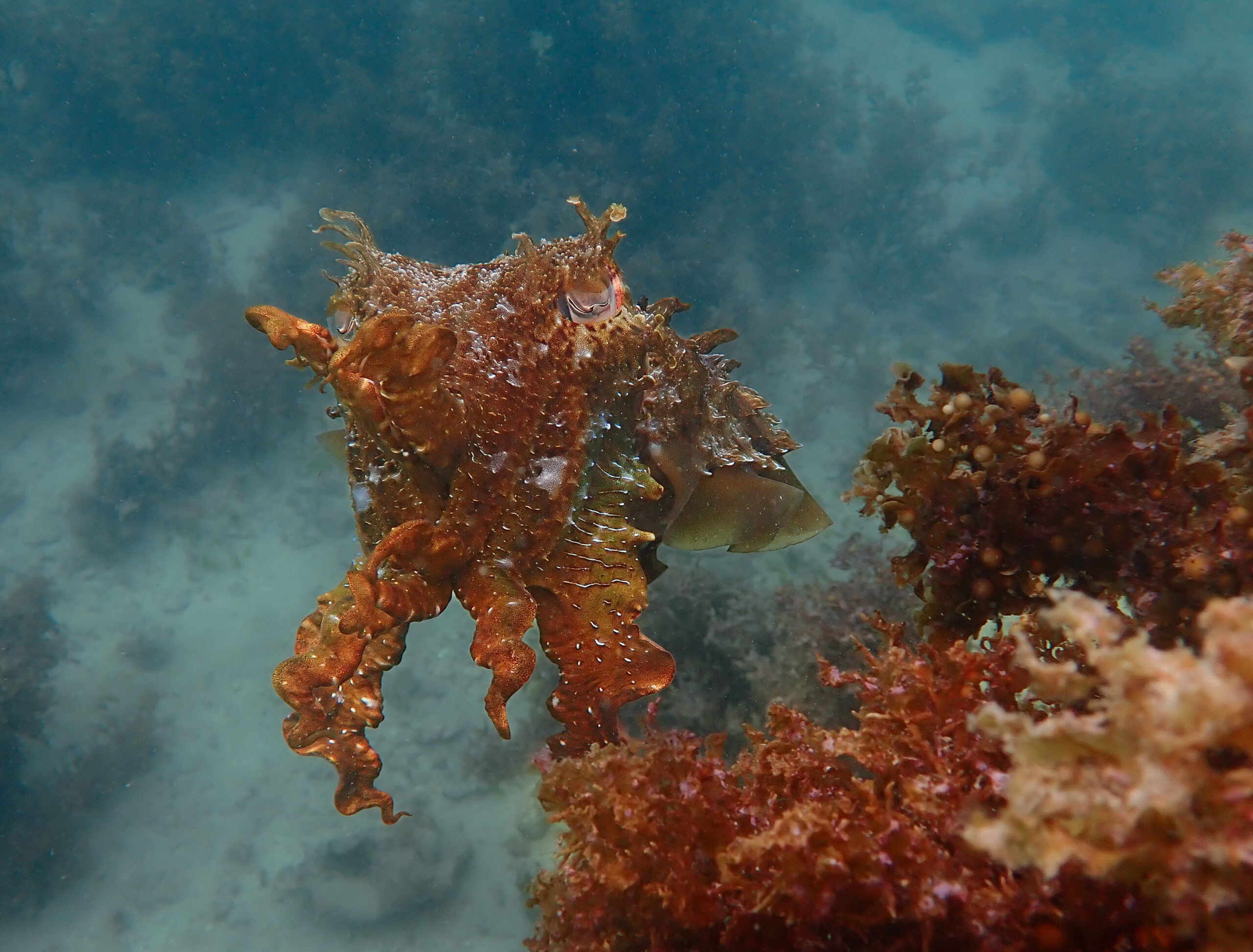
Abrolhos Islands
Sailing to the Abrolhos Islands past the Zuytdorp Cliffs was stunning, and a highlight sail for me. Huge, steep orange-red cliffs stretched for miles and miles. Rolling swell was coming in and big waves were crashing hard against the cliffs creating some beautiful sounds. The sun was setting, casting the cliffs and ocean in a golden hue. A huge humpback whale breached close to Melita which was just an incredible, magical moment; like something you would see in an adventurous sailing movie!
The sites we dived in the Abrolhos Islands had a combination of corals and kelps and a mix of temperate and tropical species. Pops of yellow could be seen under ledges, revealing beautiful sun corals. The water was quite green and cool, and a little eerie, but a lot was to be seen. At these sites the baldchin gropers (Choerodon rubescens) and western king wrasse (Coris auricularis) were very common and super curious, swimming up to check us out during our surveys. Some of the wrasse were even brave enough to try and bite our slates, but thankfully no datasheets were harmed. Cute little red-striped cardinalfish (Apogon victoriae) were abundant at one of these sites, hiding in numbers in big staghorn colonies. A lot of black-headed threefins (Enneapterygius larsonae) were present on and off transects, and I think we all got some good pictures of these little fish.
On sunset, we took the tender out to see the Australian sea lions (Neophoca cinerea). They swam out of their little sheltered area to come and check us out and have a bit of a play. It was very sweet to watch these big seadogs playing around, and a great way to end the night.
Jurien Bay
The next stop was Jurien Bay, where our survey sites were dominated by large kelp that swayed to-and-fro in the surge. Herring cale (Olisthops cyanomelas) were darting in, out and around the kelp, as were Miller’s damsels (Pomacentrus milleri) and western king wrasse (Coris auricularis). There were a couple of very well camouflaged cuttlefish (Sepia sp.), changing colour and texture quickly to mimic their surroundings as we passed by. Gastropods were quite abundant here, with several each of the tent shell (Astralium tentorium), the star shell (Astralium stellare), and the top shell (Angaria tyria) appearing on transect. This made Method 2 quite slow-going as we carefully inspected each little gastropod.
We arrived in Cervantes after a bumpy two weeks of sailing. Unfortunately we were out of time to get Melita down to Perth, as our interstate shipmates had to get there ASAP to catch flights back home. We arrived in a calm bay to our great relief, and indulged in a well-deserved pub feed and a beer. Tess and I disembarked and headed to Perth whilst Gedgar, Sue, and some of the family continued the sail to Fremantle.
Beyond Fremantle, Melita would carry on to Esperance, Eucla, along the Great Australian Bight, and eventually all the way back down to Tasmania. Hopping aboard along the way was Great Southern Reef Foundation science committee leader Scott Bennett who would join Graham in sailing by night and diving by day. The RLS effort carried on the rest of the way around the continent, in the end totaling around 350 surveys from within and outside of marine parks. Many sites only surveyed once before have now been resurveyed, and many new sites have now been established and surveyed for the first time using the RLS methods. Along the way, several new RLS divers were trained in the methodology, helping the RLS effort to continue growing. While this Lap of Australia has now come to an end, Melita will cross the ditch toward New Zealand in April 2024 to carry on the survey effort.
